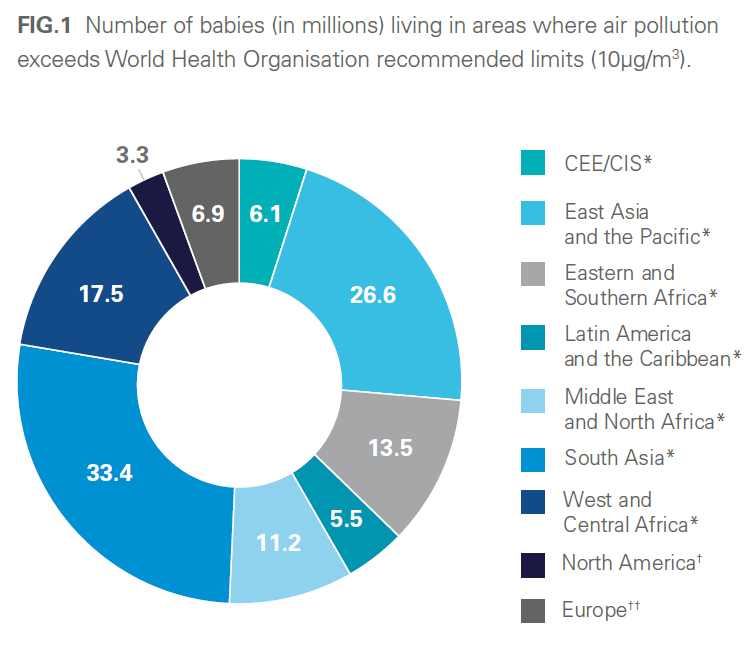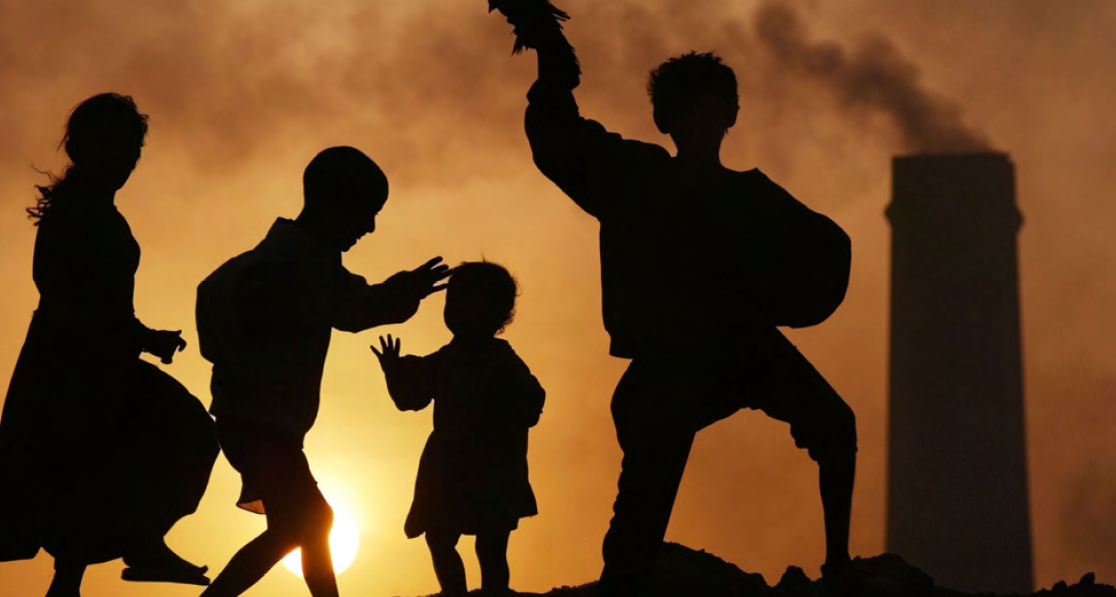Blue Raster collaborated with The United Nations Children’s Fund (UNICEF) to help produce Danger in the Air: How air pollution can affect brain development in young children. Leveraging the analysis pioneered during a recent study with UNICEF regarding air pollution, Blue Raster and UNICEF used satellite imagery of outdoor air pollution in combination with global demographic data to determine that 17 million babies under the age of 1 breathe toxic air, with the majority living in South Asia. The report also highlights why young children are the most vulnerable to the impact of air pollution.
 Air pollution is a critical health issue to people all over the world. Children are especially vulnerable to air pollution due to their physiology: their lungs are still developing, and exposure to harmful air during this critical period can be especially detrimental, causing life-threatening diseases. A growing number of studies are even pointing to the impacts of air pollution on a cognitive development. They note that breathing in particulate air pollution can damage brain tissue and undermine cognitive development – with lifelong implications and setbacks.
Air pollution is a critical health issue to people all over the world. Children are especially vulnerable to air pollution due to their physiology: their lungs are still developing, and exposure to harmful air during this critical period can be especially detrimental, causing life-threatening diseases. A growing number of studies are even pointing to the impacts of air pollution on a cognitive development. They note that breathing in particulate air pollution can damage brain tissue and undermine cognitive development – with lifelong implications and setbacks.
UNICEF has made its mission protecting and empowering children around the world. With Blue Raster’s help, UNICEF identified the youngest children who are most vulnerable to the dangers of air pollution, and promotes a greater understanding of this issue among governments, communities, and families. Further geospatial analysis can help us identify trends, pinpoint sources of pollution, and create plans for reducing pollution in the future.
“Not only do pollutants harm babies’ developing lungs – they can permanently damage their developing brains – and, thus, their futures. Protecting children from air pollution not only benefits children. It is also benefits their societies – realized in reduced health care costs, increased productivity and a safer, cleaner environment for everyone.”
Anthony Lake, UNICEF Executive Director
- Posted in
- Environment
- Climate
- Health
- Nonprofit/NGO

